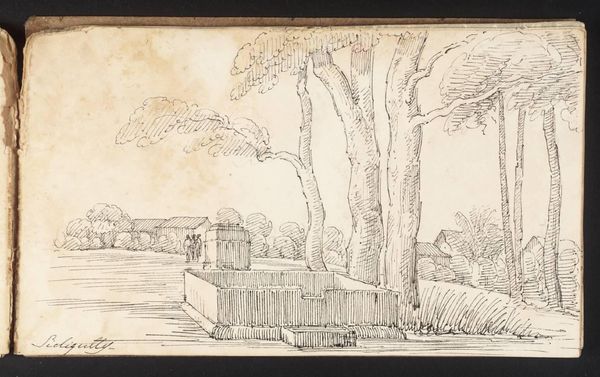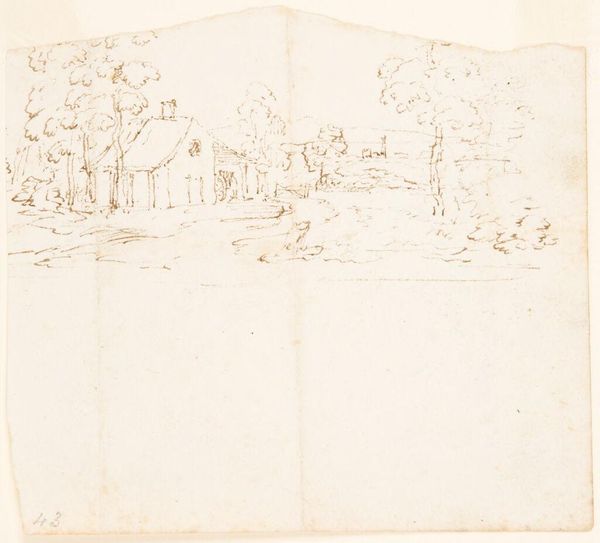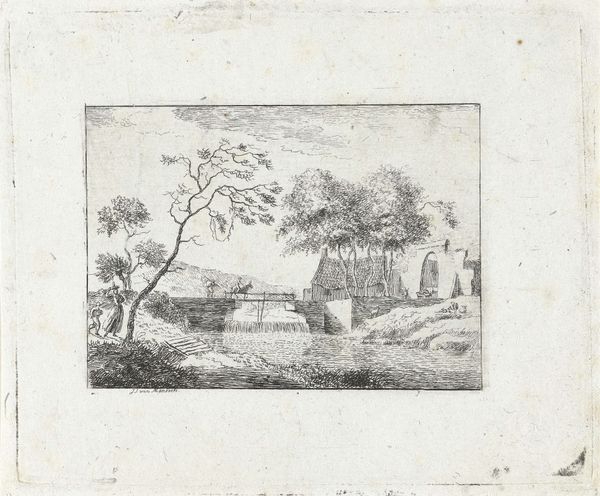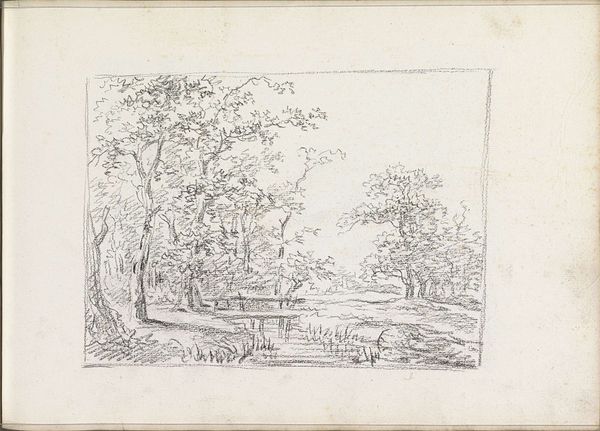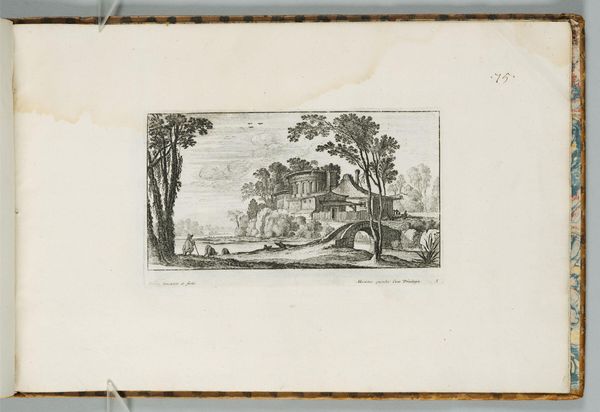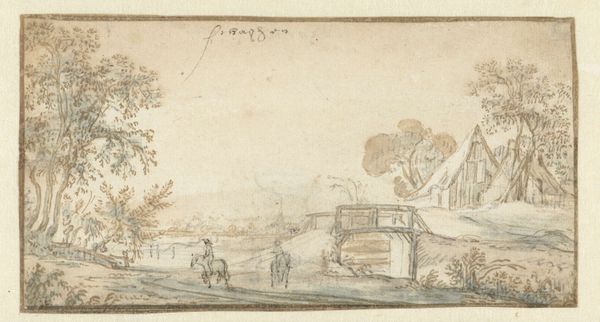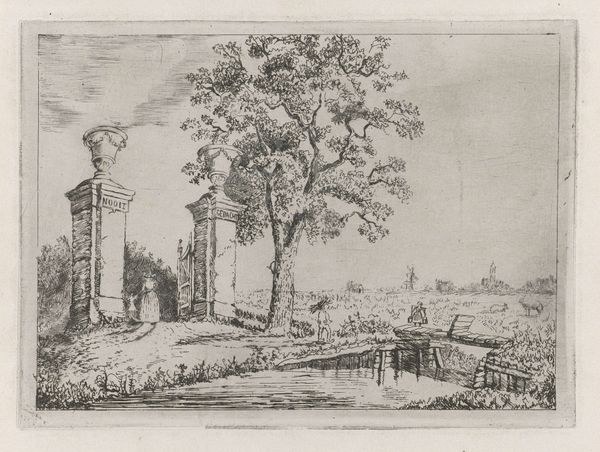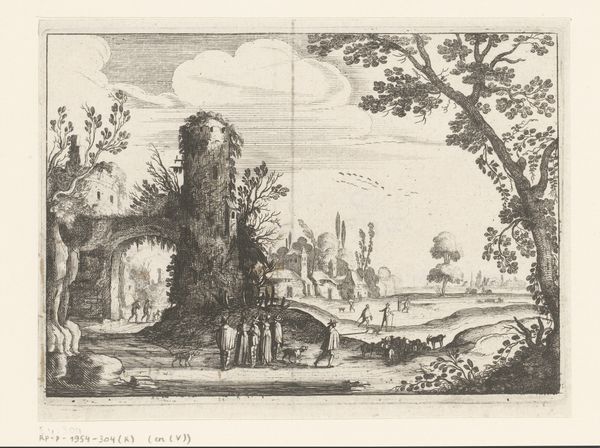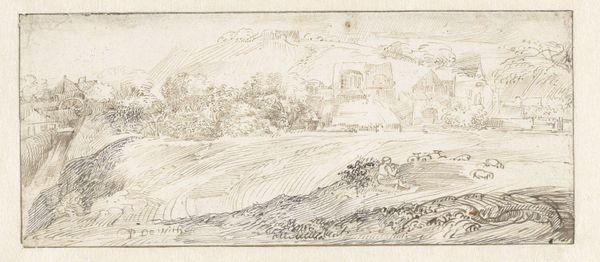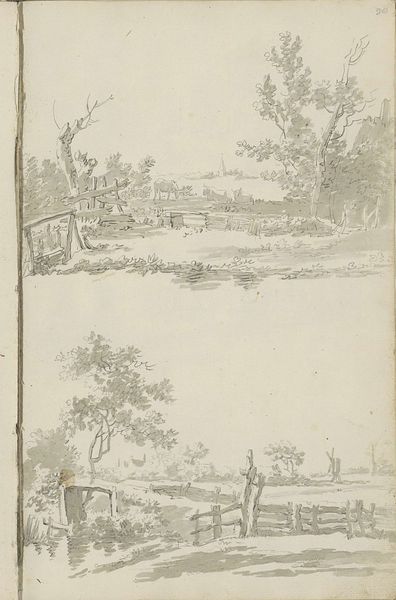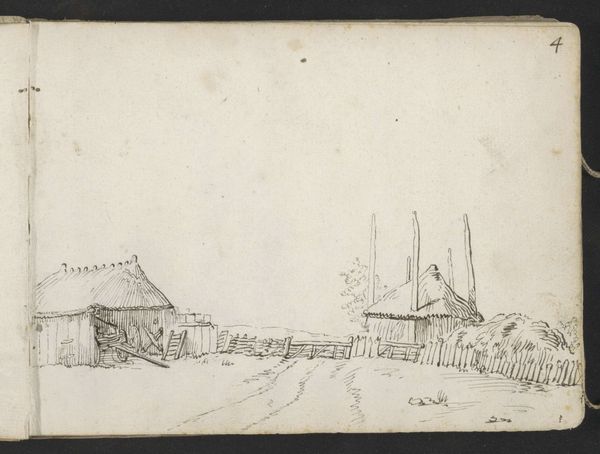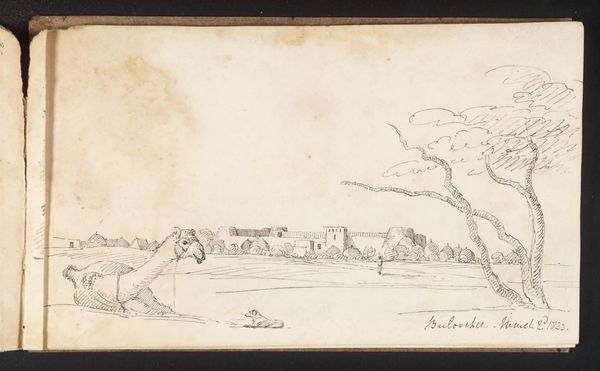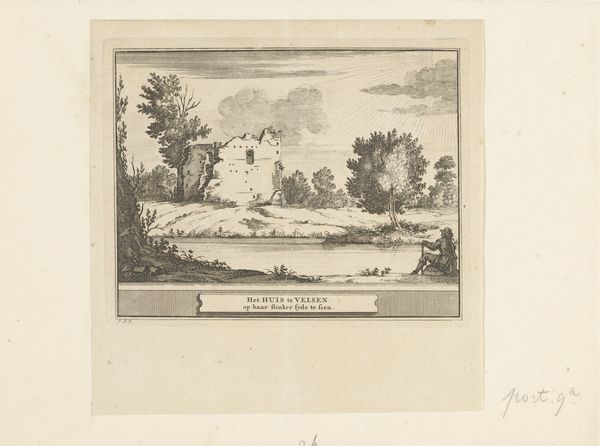
Jongen met mand, elkaar begroetende heer en dame en vrouw met manden c. 1643 - 1687
0:00
0:00
harmenterborch
Rijksmuseum
drawing, paper, ink
#
drawing
#
narrative-art
#
dutch-golden-age
#
landscape
#
figuration
#
paper
#
ink
#
genre-painting
Dimensions: height 243 mm, width 360 mm
Copyright: Rijks Museum: Open Domain
Editor: So, this is a drawing called "Jongen met mand, elkaar begroetende heer en dame en vrouw met manden," made with ink on paper by Harmen ter Borch sometime between 1643 and 1687. I'm struck by how casually the figures are sketched; it feels very immediate and informal. What do you see in this piece? Curator: As a materialist, my eye goes straight to the process. Look at the varying pressure of the ink, the way the artist uses minimal lines to suggest form and texture. Consider the *labor* involved. This isn’t a highly finished painting for a wealthy patron. It’s an exercise, perhaps, or a preliminary sketch, hinting at the day-to-day lives of ordinary people in the Dutch Golden Age. Think about the material conditions that allowed for such artistic exploration, like the availability of paper and ink. Editor: So you're focusing less on who *is* represented and more on the conditions that made the artwork possible? Curator: Precisely! Think about the source of the ink, the making of the paper itself - these are all connected to global trade networks and resource extraction. The choice of *drawing* as a medium is also crucial. It's portable, relatively inexpensive, facilitating a more direct engagement with everyday life compared to, say, large-scale oil painting at that time. Editor: I never really considered that. It seems obvious now. What about the figures carrying the baskets, does their social status suggest how artworks could reach ordinary families? Curator: Absolutely. This era saw an explosion of genre painting precisely because a new middle class wanted to see their own lives reflected in art, which is interesting in that respect of consumerism, where drawings were accessible through prints. Now look closely, and see how that correlates to who can afford commissioning or even access such artworks. Editor: It’s fascinating to think about the material history embedded in something that seems so simple. It’s about much more than the people represented; it’s about access and modes of production. Curator: Indeed. By shifting our focus from the subject to the object itself, we can reveal the hidden social and economic networks that shaped its creation and distribution, thereby enriching our understanding of the Dutch Golden Age far beyond the traditional narratives.
Comments
No comments
Be the first to comment and join the conversation on the ultimate creative platform.
